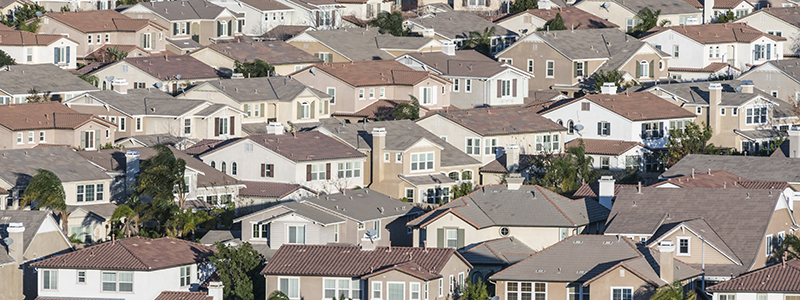The numbers are in on the cost of living in California, and it ain’t pretty: According to an analysis by the real estate listing service Zillow, as reported in the New York Times, home prices went up by a startling 12.3 percent between November 2020 and 2021. In suburban areas like the East Bay and Orange County—as well as in Sacramento—home prices increased by 25 percent. Apartments followed a similar trajectory, with rents booming across the state, but especially in the once-affordable Central Valley. Now more than ever, Californians are looking elsewhere for a reasonable cost of living.
The good news is that not everyone has given up on the Golden State. Last year, a bipartisan coalition in Sacramento passed laws to rein in excessive local regulation and get environmental review under control. Cities are currently working through how they’re going to allow duplexes, and the Regional Housing Needs Assessment or RHNA will be moving forward in the Bay Area. But as the housing cost numbers suggest, now is no time to rest on our laurels. With the legislature ramping up again, policymakers have already introduced a new crop of bills that aim to clear a path for desperately needed housing construction. Let’s run through two of the more interesting proposals.
AB 2097. Minimum parking requirements force developers to build off-street parking. At first blush, this might sound nice: why shouldn’t new development come with extra parking? The trouble is these rules often force developers to build far more parking than might otherwise be necessary, resulting in disused parking lots and empty parking garages. Worse yet, all this “free parking” doesn’t come cheap: forcing the construction of a parking garage can increase the cost of a condo by as much as $75,000. The decision of how much parking needs to be built is best left with developers and prospective homebuyers rather than imposed by regulators.
Last year, Sacramento came surprisingly close to eliminating these mandates within a half-mile of transit—that is to say, where they make the least sense, since most residents, shoppers, and commuters will be arriving without a car. But the bill, AB 1401, was unceremoniously killed in committee. This year, the idea has been revived as AB 2097, which similarly restricts the power of local governments to impose onerous parking mandates near transit. If passed, it would remove one of the key regulatory barriers to new housing construction in transit-accessible and job-rich neighborhoods, particularly in big cities like San Francisco and Los Angeles.
SB 1369. Commercial property is in a rough way, with many strip malls and office towers across the state sitting empty. Retail faced strong headwinds even before the COVID-19 pandemic, and two years of shutdowns certainly didn’t help anything, leaving strip malls in places like San Jose half empty. Meanwhile, in downtown Los Angeles, the office vacancy rate has crept up to 25 percent. While we can hope for demand to fully recover in the long term, that’s a lot of wasted space in the near term. Many commercial landlords might like to convert some of this excess capacity into the housing that our state so desperately needs. But local zoning rules that strictly separate residential and commercial uses often make such conversions illegal.
A new bill, SB 1369, would change those rules statewide and clear a path for crumbling power centers and vacant mid-rise offices to be put to good use. The bill would allow developers to convert any commercial or industrial property that is sitting over 75 percent empty into housing, regardless of the underlying zoning rules. Specifically, these conversions would be “by-right,” meaning that local governments couldn’t condition them on complicated conditional permits or force them to undergo raucous public hearings or excessive environmental studies. In some cases—think strip malls—this will likely lead to demolition and redevelopment. But in other cases—think office parks—developers could simply convert existing buildings.
~~~
Local zoning can often seem like a regulatory hydra, with new rules sprouting up as state policymakers remove or reform old rules. As I’ve said repeatedly on this blog, there is no silver bullet when it comes to fixing California’s byzantine system of development regulation. Of course, we have a general sense for some of the bad rules holding back new development, like minimum parking requirements and scaling up good rules like allowing for adaptive reuse, and critically reevaluating these rules can’t hurt. But whatever the fate of these specific bills, taming California’s out-of-control housing costs is a likely a project that’s only just begun.
Nolan Gray is a professional city planner, housing researcher at UCLA, and Pacific Research Institute fellow.

